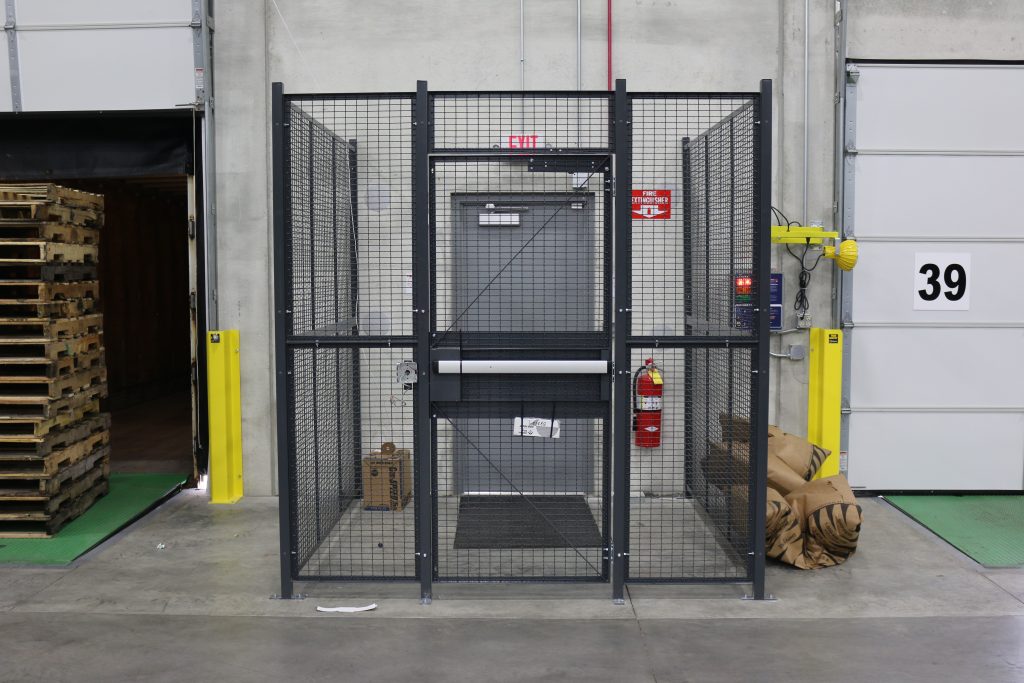
Forklift-Pedestrian Safety: Docks, Shipping and Receiving Areas
Shipping docks can become a safety hazard if not properly managed due to their busy and sometimes chaotic nature. During a busy shift, there may be multiple forklifts, carts, walkies, and other traffic attempting to navigate through a series of bay doors, all while pedestrians are potentially in the same areas. Additionally, staging areas may adjoin, allowing even more forklifts and pedestrians to work in the same shared space, increasing the likelihood of accidents.
Where are the shipping dock pedestrian danger points?
- Forklifts exiting trailers into pedestrian areas. Trailers are natural blind spots for both drivers and pedestrians.
- Visitors wandering the area: Because drivers and other visitors are often found at dock areas, they may be unaware of your safety rules and training.
- Intense activity concentrated around arriving and departing trucks: These often require both drivers and workers on foot at the same time.
- Noise and visual obstructions during loading/unloading: During a busy time, docks can be occupied by multiple stacks of pallets, parked forklifts and people.
Limited visibility and dark conditions inside truck trailers are a problem
Drivers backing out of a truck may not see a pedestrian, who is also busy working or passing nearby. When they exit the trailer, their field of visibility is limited to its opening, so they can’t see a person walking perpendicular to the trailer toward them.
When drivers are inside a trailer, they’re focused on pulling the pallets out and backing into your dock area. They’re concentrating on getting it right.

Above: forklifts engaged in unloading a trailer has extremely limited visibility. Its driver is usually reversing out of the trailer, and physically cannot see the approaching pedestrian—or anything else—outside that tight rectangle of visibility defined by the trailer and dock door. At the same time, pedestrians cannot see the forklift until it emerges. When both parties are busy and hurried, this can be a dangerous scenario.
Sometimes, drivers also have to cross a dock plate or lift when exiting trailers, which adds an extra point of distraction and requires focus. It is usually dark inside the trailers, and poorly stacked pallets force workers to be extra careful when accessing them. The temperature can also be extremely cold or hot. The main point is that drivers are focused on their load and the task at hand when backing out, which means they cannot fully concentrate on what or who is behind them.
Install forklift warning lights
There are several warning light systems available, all of which are economical, effective, and easy to install. These systems catch the pedestrian’s attention as they move along the ground and appear a few seconds before the forklift backs out, providing a clear visual signal that something is coming out of the truck. While they are not the ultimate safety solution, they are recommended for any truck operating in a warehouse environment, especially near dock areas, due to their low cost and ease of use.
We recommend that given the very low cost and good effectiveness, every forklift run with approach running lights. They are excellent for truck unloading applications in particular but effective for almost everywhere in a warehouse.
Utilize sensors and proximity warning systems

Dock safety sensors warn forklift drivers and pedestrians to help them notice each other.
Sensors and alert systems have come a long way and can be a significant safety enhancement when properly configured. Remember that when they’re in a hurry and pressed for time, people aren’t going to be as attentive to safety. Think of warning sensors as audible and visual reminders when possible problems are detected.
Whatever technology you use, it must exist within and integrate into your safety process and training protocols.

You can also utilize tag-based proximity systems that alert drivers when pedestrians are in the vicinity. Pedestrians wear these tags, which notify the driver by flashing and vibrating when the tag enters a designated zone. The driver does not need to visually spot the pedestrian to be aware of their presence. These systems do not necessitate the installation of sensors or warning devices on walls or ceilings and can detect through solid surfaces such as warehouse walls.
Separate people and forklifts by process and barriers
Our recommended pedestrian safety process relies first on separation—the concept that whenever people and forklifts can be separated, they should be.
Separation can be challenging at the docks, where numerous individuals frequently work alongside active vehicle traffic. However, you can establish some separation by assigning specific timeframes during which people must vacate the area while forklifts are in operation.
Standard training should apply: forklifts should honk, deploy backing sensors and other safety measures. Pedestrians should always be aware of their own safety when working near forklifts.
Exclusion zones work at docks, too
At the very least, people shouldn’t be working near the most dangerous point, the blind spot directly outside the trailer when a forklift is inside.

Above: short guardrails installed perpendicular to door openings to prevent people working near the docks from drifting into the blind zone directly outside the truck trailer.
- When possible, install short guardrails in the gaps between doors. This is the most dangerous area because individuals working in these areas can easily step laterally in front of the dock door and into the path of a forklift as it emerges. Neither party has sufficient time to see or react to the other when the pedestrian is in such close proximity to the outer wall. While guardrails may not be practical for every dock, they do provide additional protection for the doors and door frame materials. Implementing this simple and effective technique can cordon off a few feet of safer, “reaction” space for both parties. By doing so, distracted individuals are less likely to inadvertently drift into the path of a moving forklift.
- Design those areas closest to door gaps so that people don’t work there. Do not place computers, workstations, or scales in areas where workers on foot may need to use them. These gaps between doors are frequently utilized for such tasks since the space is otherwise unused. This practice encourages individuals to be in a high-risk area.
- Use visual aids such as mirrors and trailer lights to indicate when a trailer is occupied by a forklift. Systems that light up when a forklift is inside are relatively economical and let people working in the dock area know that a trailer is occupied. They can help people inside understand that a forklift is in the trailer and could be backing out at any time.
- In general, removing people from the immediate area around trailers is best. Sensors, warning lights and training all work, but the absence of pedestrians is the best policy. This may not be a hard exclusion zone, but can be part of your process and training.
Visitors wandering on the docks are a real problem

Untrained individuals, such as truck drivers, service technicians, and other visitors, should not be permitted to freely access your dock areas. They lack training in your forklift safety procedures and pose a greater risk than your employees. Allowing them access can result in significant liability issues. The individual most vulnerable to forklift accidents is likely an untrained guest who is unaware of the potential dangers. This is especially true for guests who do not typically work around forklifts.
How to protect guests from forklift accidents:
- Enforce all PPE guidelines such as vests, steel toes or hard hats.
- Keep exterior personnel doors locked and secure from the outside. No one should enter without proper clearance.
- Install dock door security cages that allow people to enter your warehouse, but contain them in safe areas until admitted.
- Conduct training prior to admission for authorized guests. Ensure they only travel where necessary.
- When possible, provide escorts for those who must enter forklift traffic zones.
- Create walkways separate for drivers and other guests to areas like lounges and restrooms.


